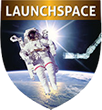Course Details
Course Summary
One of the major design challenges on many spacecraft is addressing the structural response to acoustic loads coming from launch vehicle rocket motors. Spacecraft and payloads of the launch vehicles can be damaged or suffer performance degradation due to these acoustic loads. The emphasis of the course is on the logical flow from the measurement or estimation of the launch vehicle acoustic environment through having a spacecraft that is fully qualified and acceptance tested for flight.
Course Materials
Each attendee will receive a CD copy of the PowerPoint presentation and a printed set of course materials. Included in the PowerPoint presentation are hyperlinks to reference material which the student can use to research specialized areas of interest, if desired.
Who Should Attend
This course is designed for engineers, test personnel and managers who want to improve their understanding of state-of-the-art vibroacoustic phenomena, testing techniques, acoustic test facility design and prediction methods.
What You Will Learn
How to plan a test program to fully qualify a flight spacecraft for acoustic loads. Key spacecraft acoustic testing rules-of-thumb and sanity checks. Acoustic sound pressure theory for reverberant and non-reverberant (direct) acoustic testing. Differences between launch and ground test acoustics. Acoustic test facility design considerations. The use of acoustic test data to support analytical model validation and spacecraft component random vibration test spectra.
Course Outline
- Introduction to Launch Vehicle and Spacecraft Acoustic Testing and Analysis
Outline. Overall flow of processes and activities. Launch and flight acoustics considerations. - Acoustic Sound Pressure Theory and Terminology
Sound pressure measurement, propagation, reflection and absorbsion. Properties of sound waves. - Launch and Flight Acoustics
Sources of sound pressure. Acoustic events during launch and ascent. Measurement of basic lift-off and ascent acoustic environments. Estimation of acoustic test spectra based on measured launch data. Estimation of acoustic test spectra based on ground testing. - Types of Spacecraft Acoustic Testing
Technical, schedule and cost aspects of non-reverberant (direct) and reverberant acoustic testing. - Acoustic Test Technical Parameters
Sound pressure level, frequency bandwidth, damping, coupling loss factors and reverberation time. - Acoustic Test Facility Design, Capabilities and Challenges
Acoustic test facility schematics. Acoustic chamber design considerations. Sound pressure generation including vaporizers, transducers, horns and loud speakers. Modal density. Instrumentation for acoustic testing. Safety considerations. Communications. - System Level Spacecraft Acoustic Test
Acoustic testing philosophies, methods and requirements. Acoustic test control. Data processing during acoustic testing. Acoustic test management, personnel and requirements. Sources of errors in spacecraft acoustic testing and error Mitigation. Acoustic test plans, specifications, procedures and reports. - Avoiding Acoustics-Caused Problems
How spacecraft modes respond to acoustic environments. Avoiding problems caused by vibro-acoustic responses during ground testing. Payload fill effects. Differences between launch/flight and test acoustics. Acoustic problems generated during spacecraft launch and ascent. - Analytical Prediction of Acoustics and Vibro-Acoustic Response
General overview of statistical energy analysis and finite element and boundary element methods. Estimation of spacecraft component random vibration using empirical methods. Use of test data to support analytical modeling.
Instructor

Jim Haughton is a structural test engineer with over 30 years experience in structural testing of aerospace hardware. He specializes in mechanical launch environment analysis, acoustic, vibration and modal survey testing on spacecraft. His aerospace work has been primarily through the Naval Research Laboratory’s Naval Center for Space Technology and NASA Goddard Space Flight Center. He is also currently supporting the design review effort for the NASA Plumbrook VTC. He has a BSME degree from Manhattan College, Bronx, N.Y. and he has been the President of, and Structural Test Engineer for, Kinetic Research Corp since 1985.
